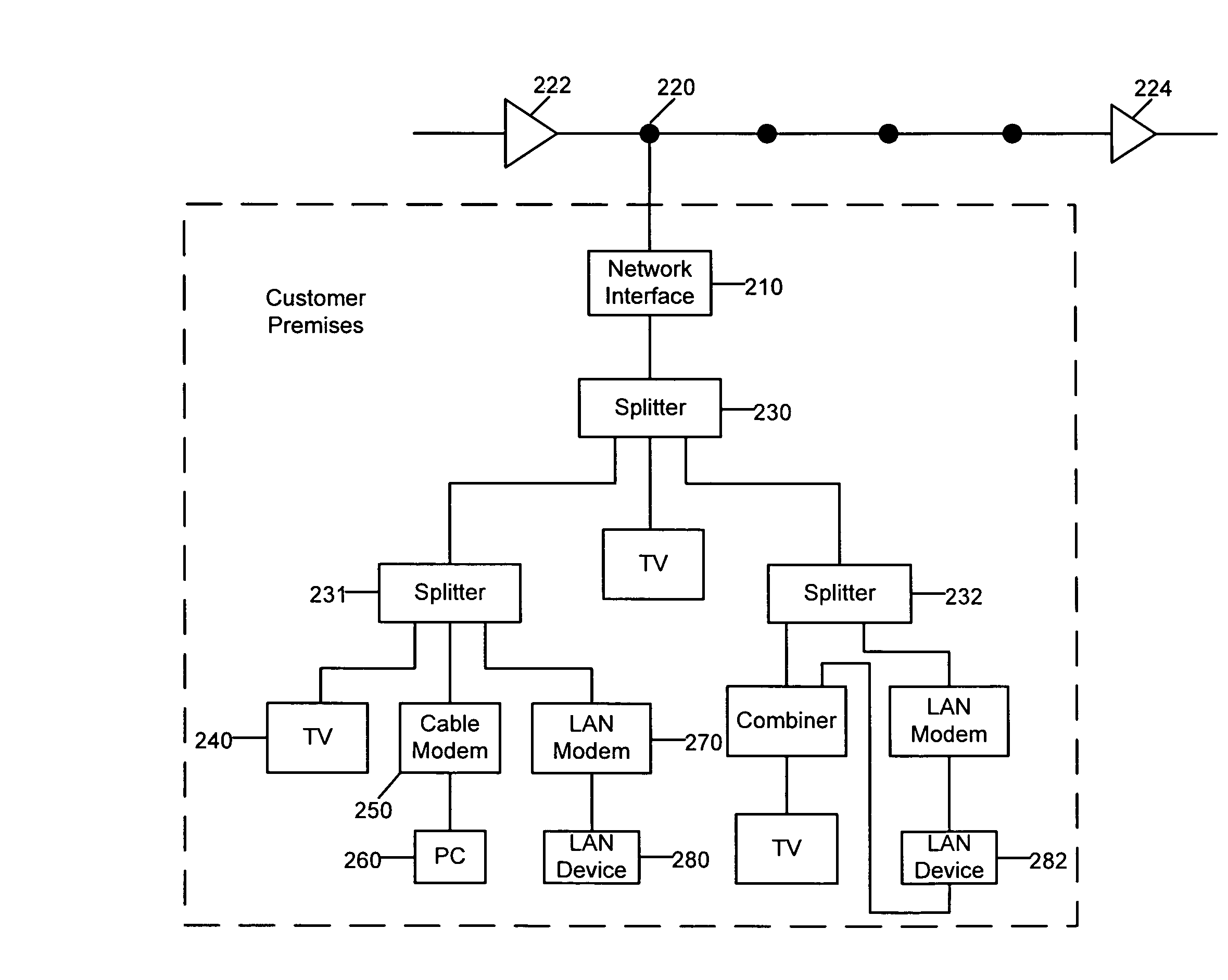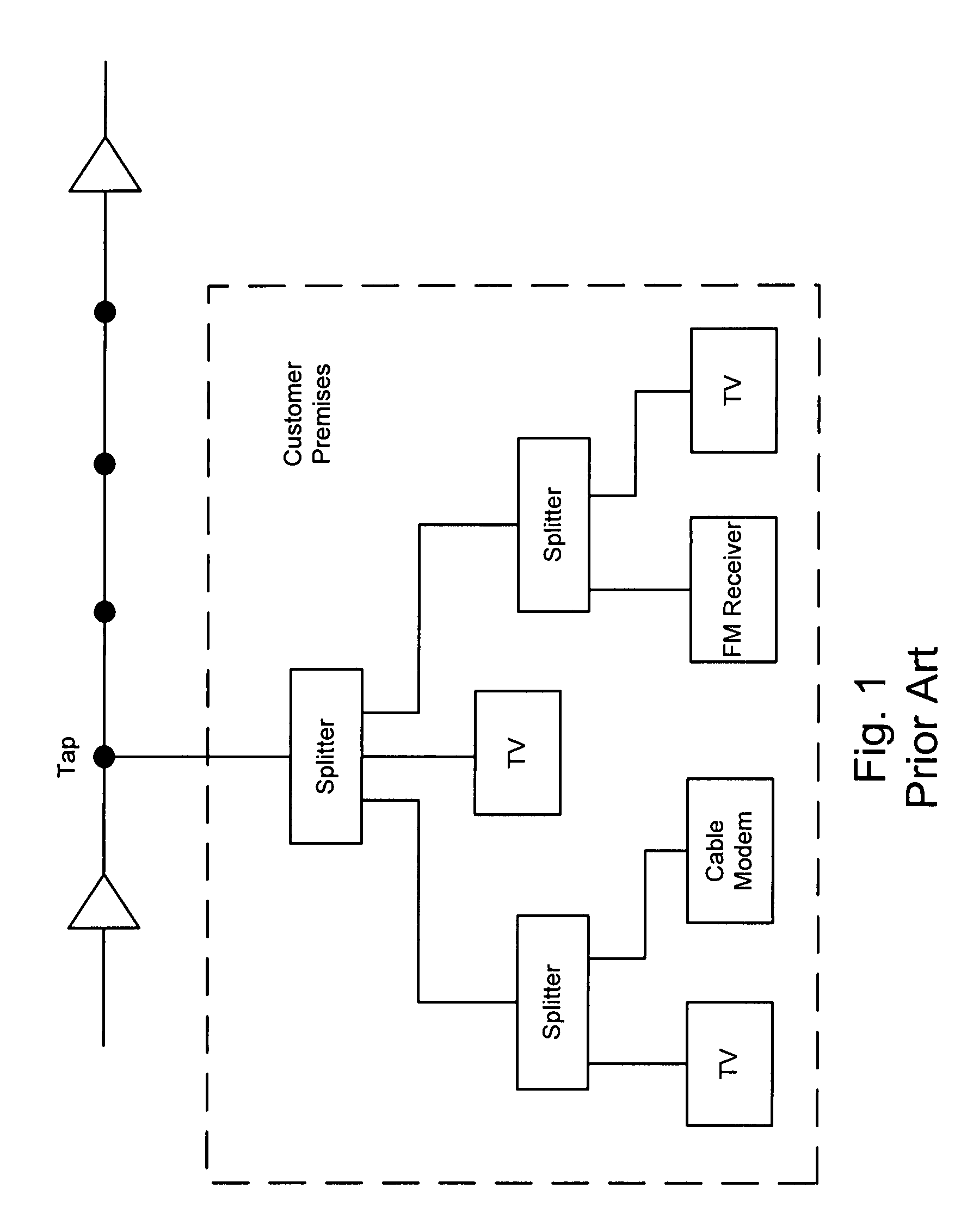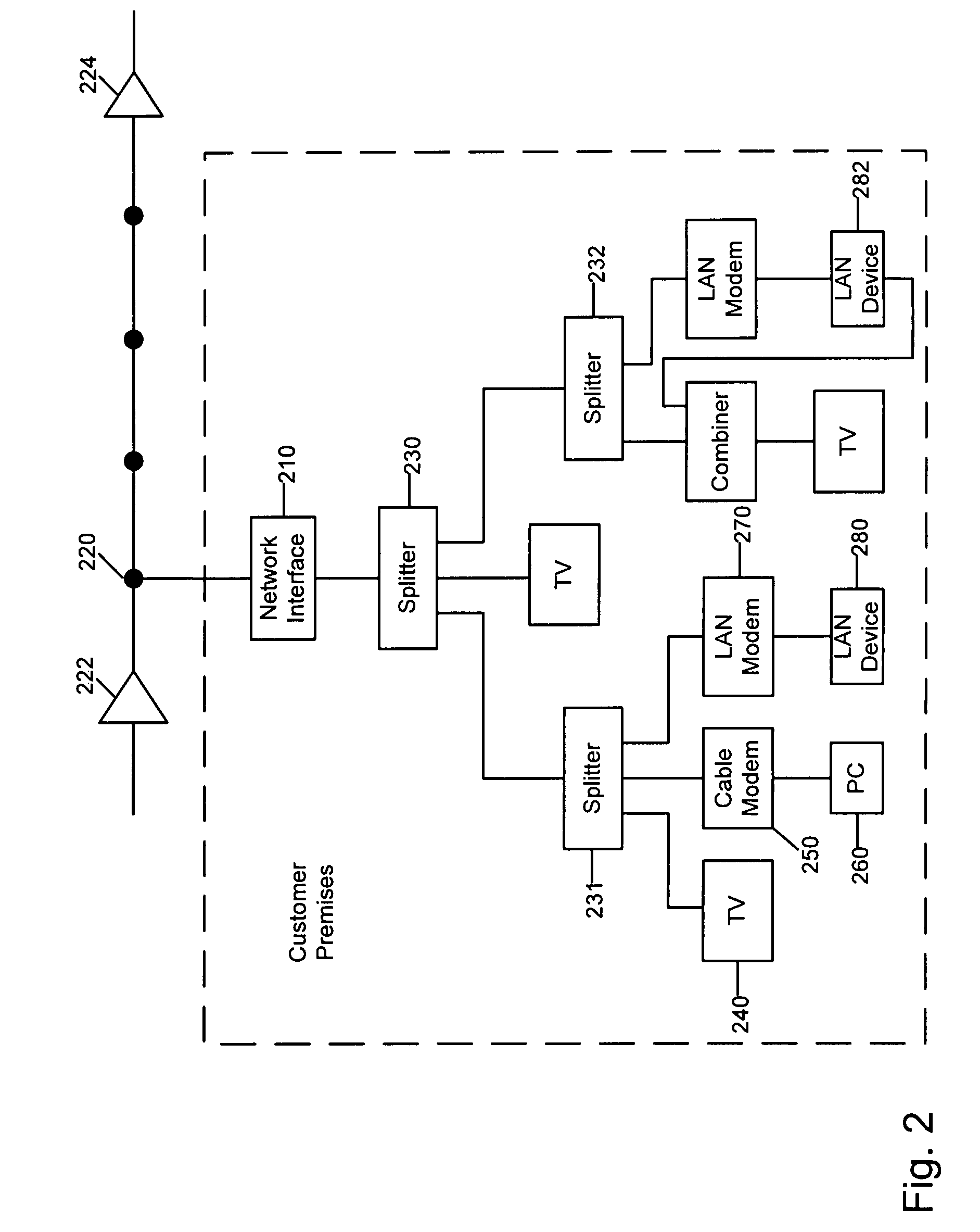Broadband network for coaxial cable using multi-carrier modulation
a coaxial cable and multi-carrier technology, applied in the field of broadband communication networks, can solve the problems of low signal loss, low signal attenuation, and low signal attenuation in the different branches of building wiring, and achieve the effect of high attenuation
- Summary
- Abstract
- Description
- Claims
- Application Information
AI Technical Summary
Benefits of technology
Problems solved by technology
Method used
Image
Examples
Embodiment Construction
[0034]Referring to FIG. 2, LAN modem 270 provides modulation and demodulation of the waveform transmitted over the cable. LAN modem 270 has an interface to communicate with a LAN device 280, which is the source or destination of data transmitted over the LAN. LAN device 280 can be, for example, a personal computer (PC). LAN device 282 can be, for example, a modulator to produce a signal for driving a TV through a signal combiner. Network interface 210 is optional, it provides an additional signal coupling path between wiring branches if needed and is described more fully in co-pending application Ser. No. 09 / 910,412 “Network interface and broadband local area network using coaxial cable”. Additional networks can be connected to taps in the cable plant. The networks can reside in the same or different building.
[0035]LAN devices 280 and 282 can be used for digital video services or data services. LAN device 282, for example, can extract digital video data from a transport stream, such...
PUM
 Login to View More
Login to View More Abstract
Description
Claims
Application Information
 Login to View More
Login to View More - R&D
- Intellectual Property
- Life Sciences
- Materials
- Tech Scout
- Unparalleled Data Quality
- Higher Quality Content
- 60% Fewer Hallucinations
Browse by: Latest US Patents, China's latest patents, Technical Efficacy Thesaurus, Application Domain, Technology Topic, Popular Technical Reports.
© 2025 PatSnap. All rights reserved.Legal|Privacy policy|Modern Slavery Act Transparency Statement|Sitemap|About US| Contact US: help@patsnap.com



